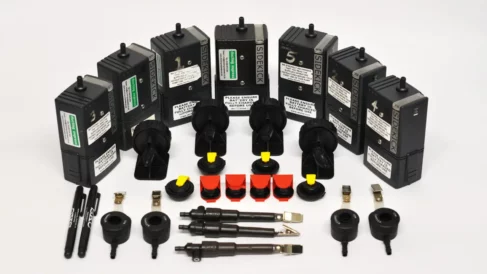Personal Dust sampling
Personal dust sampling should be a central part of the occupational health program of every company. Employers have an ethical and legal duty to provide a safe, healthy working environment for their employees.
We are able to monitor dust levels either personal or within your building to ensure your company does not exceed the levels set out by the HSE.
Air sampling
Generally dust & fume samples are taken concurrently with the LEV examination, this will provide additional assurance you’re not above the guidelines set out by the HSE.
Introduction
- ‘Exposure measurement’ requires a survey to assess people’s exposure to substances in workplace air, and discover how and why this exposure happens.
- ‘Personal sampling’ is taking an air sample near the worker’s breathing zone to measure the amounts of airborne substances inhaled for a stated task.
- Other sampling may be needed to assess controls. Exposure measurement is required:
- for COSHH assessment, to help in selecting the right controls;
- where there is a serious risk to health from inhalation of the substance;
- to check that exposure limits are not exceeded;
- to check that your exposure controls work well enough, or if you need improvements;
- to check that new controls work well enough;
- to help choose the right level of respiratory protection;
- after process or production changes that mean exposure may have changed;
- to show any need for health surveillance; or
- when an Inspector issues you with an ‘Improvement Notice’ requiring monitoring.
- Exposure measurement is not an alternative to controlling exposure. Measurements are best done after controls have been applied.
- Exposures vary from day to day. They may be higher on another day when no measurements were taken.
- If the results for a given task are below one third of the exposure limit, your controls are probably good enough.
How do we sample air?
- Sometimes you can use special meters, smoke tubes or colorimetric detector tubes to see if there is a problem with your controls.
- Normally you need specialised sampling equipment. Contact a health and safety consultant in occupational hygiene – see ‘Useful links’.
- Ask tendering consultants for evidence of their competence, and that of any laboratories they plan to use. How will they check that you understand their report?
- Sometimes you will also need biological monitoring to detect exposure through skin contact, by swallowing, or if respirators are not working well enough. Important points you need your consultant to cover
- Arrange sampling on a busy day when everything is working normally. (Unless you need to sample a particular process such as plant maintenance.)
- Make it clear that you want personal samples to compare with exposure limits. Background (static) samples can be used to tell where substances escape into the workplace.
- Demand ‘context’ information with personal samples (the person, the task, the work pattern, the controls used, their performance, and any other information concerning the work environment).
- Ask for comments (eg if other routes of exposure could be important).
- Your consultant should include all the monitoring results and interpret them (eg for risk, for indication of control deterioration).
- Ask for recommendations on how to maintain or improve the controls, on future monitoring needs, and where appropriate, for advice on health surveillance. What the consultant’s report should include Facts:
- background to, and the purpose of the survey;
- the process measured, the work patterns, and the hazards involved;
- the control measures in place, and their performance;
- photographs and diagrams;
- what measurements were taken (long and short-term), and how;
- how and where samples were analysed;
- exposure limits or exposure benchmarks, and whether these are protective of health;
- any industry standards of good control practice; and
- results, related to a plan of the process. This includes how 8-hour time-weighted average concentrations were calculated.
LEV (or LOCAL EXHAUST VENTILATION) describes systems that include extract ventilation preventing people in the workplace from inhaling substances, which may be hazardous to their health. Examples of such systems include dust extraction systems, weld fume systems, and vehicle exhaust systems, which are required to comply with COSHH regulations.
If your company has any issues regarding the control of fume, dust or waste that the HSE are investigating Ducting Express would welcome the opportunity to advise you and attend any meeting you may have with the HSE.


